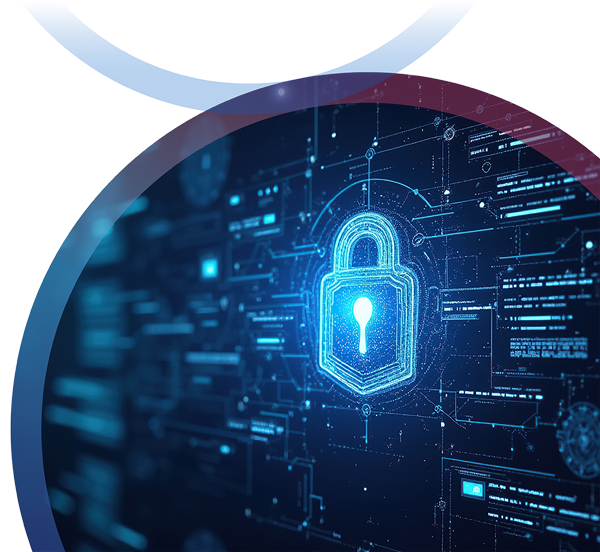The Trojan Horse in Your Tech Stack:
Securing AV & Media Before It’s Too Late
As enterprise and media organizations embrace IP-based technologies and hybrid environments, a critical vulnerability has emerged in their technology stacks: AV and media systems. Originally engineered for performance rather than protection, these systems have become a Trojan horse for cyber threats and are often overlooked by traditional IT security strategies.
This article highlights the importance of treating AV and media infrastructure as mission-critical digital assets, demanding the same secure-by-design principles applied to other IT domains. Using a four-pillar framework—Identity, Integrity, Visibility, and Alignment—we outline how organizations can benchmark their AV cybersecurity risks and cyber maturity to close dangerous security gaps.
Through real-world cyber incidents, breach examples and actionable guidance, we reveal how failing to secure these systems risks not only business continuity, but also public trust and regulatory standing. In a climate where cyber maturity is fast becoming a competitive differentiator, the time to secure AV and media isn’t after an attack—it’s now.

AV Cyber Maturity:
4 Pillars to Strengthen Media Infrastructure
Before diving into the risks, it helps to have a framework. Organizations can benchmark and advance their cybersecurity posture across AV and media systems by focusing on four key areas:

1. IDENTITY
Are your AV systems integrated into enterprise identity and access management (IAM)? Are you using multi-factor authentication (MFA) and role-based access control (RBAC) across all environments?
2. INTEGRITY
Are software and firmware patches validated, encrypted, and securely distributed? Can you trust your external vendors and supply chain?
3. VISIBILITY
Are AV and media systems visible to key stakeholders? Are logs being ingested and alerts being triaged in real time?
4. ALIGNMENT
Are AV and media systems governed by the same security protocols, controls, and standards as the rest of your critical infrastructure?
Key Takeaway
Organizations that mature across these pillars reduce cybersecurity risks, accelerate project workflows, and demonstrate compliance with confidence.

Pillar 1: IDENTITY
You Locked the Front Door—but Left the Studio Window Open
There’s a strange irony in today’s digital workplace. While companies invest heavily in securing emails, data centers, and laptops, they often ignore the very systems that broadcast their message to the world: cameras, servers, switchers, and media content encoders.
The rise of IP-based technologies and protocols like SMPTE 2110 has redefined how premium content is moved, managed, and shared. Cloud connectivity, real-time collaboration, and remote production are now the norm.
But while the infrastructure has evolved, the security mindset hasn’t.
Too often, media systems live outside enterprise access credentials and IAM policies. The myth that “AV is covered by IT security” is not just wrong—it’s dangerous.
In reality, these systems often sit in limbo—outside the purview of IT, devoid of basic controls like multi-factor authentication (MFA) or role-based access control (RBAC) and rarely included in enterprise-wide risk assessments. These gaps create easy entry points for attackers—and missed compliance marks for CISOs.
And as hybrid work and global streaming become business-as-usual, this oversight becomes a liability.
Key Takeaway
If your AV systems aren’t part of your IAM strategy, they’re part of your attack surface. Close the gap with MFA, RBAC, and unified access management.

Pillar 2: INTEGRITY
Protecting the Supply Chain and Patching Process
The average cost of a data breach now exceeds $4.45 million, according to IBM’s 2023 Data Breach Report1 . But many AV vendors still rely on unsecured websites, unverified downloads, and even USB sticks to distribute critical patches. These channels are ripe for data theft and manipulation.
Without encrypted, validated patching processes, even a routine software update can become a Trojan horse. To complicate things further, AV vendors often operate on slow patch cycles and delayed deployment due to operational concerns. In 2023, Cisco Cybersecurity reported that 62% of organizations reported incidents arising from delayed or improperly validated software updates.2 So it’s common for vulnerabilities to persist for months—or even longer—before being identified and fixed. Then, it takes even longer to resolve a data breach with the average time to identify and contain a data breach at 277 days, according to IBM.3 This data suggests that the common lifecycle of a vulnerability turned breach spans more than a year.
This kind of lag is an unintentional gift to attackers. Effectively securing your media environment requires validating every update, hardening the entire supply chain, and working exclusively with partners who treat security as non-negotiable.
Key Takeaway
Enforce secure patching practices and vet your AV vendors like any other IT provider. Trust must be earned—and verified.

Pillar 3: VISIBILITY
Bringing AV Systems Under the Security Radar
Too many AV and media systems are invisible to key stakeholders. They live outside IT monitoring tools, threat detection platforms, and audit processes. That means a rogue update or malicious actor could wreak havoc with no alerts, no logs, and no response plan.
The shift to IP-based media systems—SMPTE 2110, NDI, cloud workflows—means these systems are networked like any other enterprise platform. But unlike core apps and infrastructure, they often lack the same logging, alerting, or incident response coverage.
That lack of visibility extends to compliance, too. Frameworks like OWASP and C2PA are evolving into procurement requirements. Proving integrity is no longer optional. Organizations must ensure that media systems feed into their monitoring infrastructure and are regularly audited for vulnerabilities.
Key Takeaway
Enforce secure patching practices and vet your AV vendors like any other IT provider. Trust must be earned—and verified.

Pillar 4: ALIGNMENT
Breaking Down Silos and Building Resilience
AV and media systems are still too often managed in silos. They operate under different policies, escape enterprise governance, and don’t always follow the same controls as the rest of IT. That doesn’t just create gaps—it breeds liabilities.
Enterprise organizations increasingly rely on media systems for communication. Yet, a control room may operate on different identity policies than the rest of the business. Misalignment like this invites risk.
To close the gap, organizations must treat AV and media tech as core infrastructure. That means applying enterprise IAM, hardening patch pipelines, enforcing secure-by-design procurement, and requiring parity with IT security standards.
Key Takeaway
Security is only as strong as your most disconnected system. Align AV with IT policies and controls to create a unified, defensible posture.
Real-World Consequences When Tech is Compromised
Cyber threats to AV and media technology aren’t some distant possibility. They’re a reality that impacts organizations around the world every year. Over the past decade, numerous cyber incidents have exposed just how vulnerable AV and media systems can be when treated as second-tier IT assets. And when breaches happen, the damage isn’t confined to a single screen or server. Entire operations grind to a halt, broadcasts go dark, revenue pipelines freeze, and the trust of audiences and partners takes a hit.
To see just how widespread and serious these breaches are, visit IDStrong’s Breach Tracker 4 or any other breach tracker out there (there are many public sites that track them). These sites maintain an ongoing record of attacks across industries—including media, entertainment, and enterprise environments—that illustrate what happens when systems are left exposed.
These aren’t random events. They’re targeted strikes on infrastructure that wasn’t adequately secured—systems that were essential yet underestimated. In each case, the damage extended far beyond technical cleanup and impacted business continuity, regulatory compliance, and brand reputation.
Key Takeaway
The real-world consequences of inaction are already playing out—publicly and repeatedly. Treat AV with the same cybersecurity rigor as your core IT infrastructure.
The Choice
Secure-by-Design or Sorry-in-Retrospect
Waiting until something breaks isn’t a strategy. It’s a liability. The way forward is preparation rooted in secure-by-design principles. That means embedding cybersecurity into every layer of your AV systems from day one.
Secure-by-design starts with the basics: choosing technologies that support core controls like MFA, RBAC, and encrypted patching. It extends to working exclusively with vendors who align with industry standards like NIST, ISO, and OWASP. These aren’t just technical checkboxes—they’re the foundation of trust.
As AV workflows increasingly span cloud and on-prem environments, your security posture must stay consistent. Whether content lives in a data center or a live production environment, the same protections must apply.
That consistency also means eliminating silos between AV, IT, and cybersecurity teams. Identity management should be centralized. Visibility should be unified. And AV systems should be monitored, audited, and treated like any other critical digital asset.
Organizations that adopt a secure-by-design mindset don’t just mitigate risk, they gain business agility, operational confidence, and long-term resilience.
6 Steps to Get Started:

1. Assess
Take inventory of all AV and media systems and evaluate risk
2. Align
Integrate AV into enterprise IAM and policy.
3. Harden
Enforce encrypted patching and secure software supply chains.
4. Monitor
Add AV systems to your alerting workflows.
5. Collaborate
Unite IT, AV, and cybersecurity teams.
6. Design Forward
Bake security into every new deployment.
Key Takeaway
Secure-by-design isn’t a feature—it’s a future-ready strategy. Building it in means an attack could be more of a nuisance you can handle than a catastrophe.
Partnering for Protection and Progress
Cybersecurity is no longer just about risk mitigation—it’s a business differentiator. Organizations that embed security into their media infrastructure are poised to move faster, earn greater trust, and win more business.
With procurement teams and regulators increasingly asking for proof of security maturity, having AV systems that are secure-by-design gives organizations a competitive edge. Frameworks like C2PA will soon require verifiable authenticity across content pipelines. It won’t be enough to say a file is original—you’ll have to prove it hasn’t been tampered with.
Those who prepare now won’t just avoid breaches—they’ll lead. Those who delay will find themselves scrambling when the next RFP demands compliance they can’t meet.
That’s where expert partners like Diversified and GroCyber come in. From assessment and architecture to implementation and monitoring, we help organizations embed security from day one—without sacrificing creativity or control.
A secure-by-design approach starts by embracing the four foundational pillars:

1. IDENTITY
Integrate AV systems into enterprise IAM from the start. Use MFA and RBAC to ensure only the right people have the right access at the right time.

2. INTEGRITY
Treat patching like a security-critical operation. Demand encryption, validation, and trusted delivery from your vendors.

3. VISIBILITY
If you can’t see it, you can’t secure it. Bring AV and media systems into your monitoring and alerting infrastructure.

4. ALIGNMENT
Tear down silos between IT, AV, and cybersecurity. AV deserves the same governance, controls, and oversight as the rest of your digital ecosystem.
Getting this right means more than preventing a breach. It means faster workflows, stronger regulatory standing, and the kind of operational resilience that transforms security from a reactive defense to a strategic advantage.
Key Takeaway
The best time to act was yesterday. The next best time is now.
